Happy 19th, Ninetweeners!
And Happy Juneteenth!
A note before we begin: In this issue, I’m going to talk about England in the 16th and early 17th centuries. I want to acknowledge up front that the English colonial ambition that defines this period caused a disproportionate amount of harm and continues to cause harm to marginalized people around the world.
As a historian, I believe it is important to study and understand the past. But more importantly, as a human being, I believe it is essential that we deconstruct these systems and hold ourselves accountable for how these structures caused irreparable damage. This includes interrogating cultural institutions like museums and art galleries, decentering whiteness, examining our inherited biases, and being actively anti-racist in our personal and professional conduct.
This is the fifth issue of my monthly newsletter, Ninetween. You can look out for new issues on the 19th of every month at 19:00 EST (that’s 7 PM!)
Please consider showing your support by leaving a like or comment when you’ve finished reading. Even better, recommend Ninetween to a writing pal! I’d appreciate it.
Anyway…
In 1602, Elizabeth I was painted in a gown covered in eyes and ears.
It’s freaky.
The portrait is called the Rainbow Portrait. Historians aren’t certain who painted it, though they’ve narrowed it down to a few likely candidates (favourite painters of the Queen and her secretaries).
Want to see it?
Back in our first issue, I told you a bit about my educational background in Early Modern History. One of my favourite areas of study within this period is Elizabethan portraiture. It’s steeped in symbolism and meaning because we have some pretty interesting stuff going on during a reign that lasts over four decades: a Queen solo-ruling without a man to step in front of her, a war-of-the-wits with Catherine de’ Medici (the Queen of France), competing ambitions with Philip II of Spain, the aching desire for Mary, Queen of Scots to just chill and stop making herself look so dang guilty.
Interesting for us, I guess. Maybe a touch stressful for Bess.
Anyway, as Elizabeth’s reign progressed, she fought to establish an image through portraiture that conveyed strength, power, and virginity.
So, what about the Rainbow Portrait?
Well, a lot of that strife had settled by the time this was painted. It was painted late in Elizabeth’s reign, only a year before she died in 1603. Still, the monarch (who was pushing 70) appears fair-faced and youthful. She’s draped in a thick orange gown with a large curled snake embroidered down the arm. She drips with jewels, including a long, knotted pearl necklace. She is framed on either side by an exaggerated and taut fabric neckline that extends from her back like fairy wings.
Prominent in the portrait, and the source of its name, is an item that, with modern eyes, looks kind of like the tubing you might find attached to a pool pump or in your furnace room. She holds this strange pipe in her right hand with the Latin words above, non sine sole iris, which translates to no rainbow without the sun.
Yup. That pipe thing is a 16th-century rainbow.
Though, to be fair, you’d look a little colourless after 423 years too. The rainbow would have been much more vibrant when it was painted, but as with all things, it has faded over time.
A lot of the symbolism here is self-evident. Elizabeth is the sun, casting the rainbow—a well-known biblical symbol of peace, prosperity, and God’s approval—over England. The jewels convey wealth, while the knotted pearls in particular communicate the Queen’s devotion to virginity. The snake, a common feature in Elizabethan portraiture, symbolizes wisdom and cleverness.
Lizzie is telling us through this portrait that she’s an eternal, divinely chosen, and wise Queen who has brought prosperity, peace, and wealth to England.
So then, what is up with the horror-gown?
I buried the lede on this one, because the orange and gold gown Elizabeth wears at first looks normal if a bit creased and velveteen. But on closer inspection, the prudent viewer will realize the gown is speckled with eyes and ears.
It’s kind of terrifying. I love it.
Here, Elizabeth’s artist has thrown subtlety to the wind. It suggests Elizabeth’s omniscience—the way she hears and sees all. It shows the faithfulness of her servants who communicate this information to her, and her attentiveness to her subjects.
It is, ultimately, a symbol of power.
Just try to rebel against a queen literally wearing additional eyes and ears. Remember how hard it was to get away with things in front of your mom? And she (presumably) only had two eyes on the back of her head.
So, what is the point in all this, and what does it have to do with writing?
Writing Tip: Finding Character Arcs Through Fear
Earlier this month, I facilitated a discussion with Amelinda Bérubé about her book The Ones Who Come Back Hungry. The event, called delve: in close conversation with writers, was hosted by Almonte Readers & Writers, the non-profit I work with that supports the literary community in Lanark County.
Amelinda and I were given a blank slate as to where we’d like to take the conversation, so we met a week before to go over some talking points and bounce ideas around. We wanted the conversation to be natural and effortless while still ensuring that we were hitting on the things Amelinda is an expert in: writing for young people and scaring the pants off a reader.
I’m not what you’d call a Horror Writer™ — so this talk was a challenge for me, and it got me thinking a lot about fear in my lead up to my chat with Amelinda.
I realized something. Most stories, even those outside the horror genre, use horror as a literary device. Characters, like us, are motivated by fear. Fear of loss, death (emotional or physical), change, etc.
During our chat, Amelinda and I got talking about how close Pride and Prejudice comes to being a horror novel. Life in a small community, surrounded by the same people day after day, the gossip and maneuverings to join families (and wealth) through marriage. All you need to do is slap a different sort of tension over the whole thing and suddenly — eek! — Step aside, Stephen King.
It’s kind of like when you replace the spine-tingling music in the opening scene from The Shining with some song by Nickelback. It just doesn’t feel the same.
It works because of fear: the thing that motivates characters to action. It doesn’t matter whether it’s the fear of becoming a spinster or the fear of being killed by the ghost of a spinster.
When I edit a novel, the first thing I do is write down the main character’s biggest fear, the one that is driving the narrative. In the draft I’ve just finished editing, it was “paralyzing fear of loss.”
Next, I write the change the character has experienced as it relates to that fear. With this same book, I wrote, “acceptance of loss and death as a part of life.”
In between the two, I put an arrow. That is the character’s arc. They are moving from the fear of loss to the acceptance of it. That’s the purpose of the plot, the thing each scene will strive to serve.
This is super simplified, and most novels will require many layers of additional conflict, but through this exercise, we can identify a character arc through fear that drives change.

Change is the most important part of a character arc because if your character is not confronted with their fear, why are we reading? What journey are they going on? This is not to say a character must change, but they must at least address their fear and make a choice to change or to dig in. Even digging in is a move from unconscious to conscious denial. A change.
Let’s go back to portraiture, for a moment.
Part of the drama of not knowing the full backstory behind the Rainbow Portrait is that we don’t know the precise circumstances under which it was commissioned. We don’t know why.
By 1602, Elizabeth had been queen for a long time. Despite this, she looked young and fresh-faced in (nearly) every portrait painted of her. She carefully crafted a very specific, symbol-rich public image. Her hair was always red, never gray. Her lips always plump, teeth always hidden. Her skin is rarely wrinkled, always pale.
Remember the fairy wings? I pointed them out above, but I didn’t mention them again for a reason. They come from the eternally youthful Gloriana from Edmund Spenser’s epic poem, “The Faerie Queene” (1590). We see them time and time again in Elizabeth’s commissioned portraits. Elizabeth wants us to see her as otherworldly, divine, and eternal. But there is an anxiety underneath it all, too.
So, while you probably thought that the horrific part of the portrait was the eye/ear dress, what I’m really getting at is something deeper. The one thing the queen could not control and the thing she feared most: aging.
When we strip these things away — the wigs and jewels and ornate clothing—we find someone mortal. We find fear. We find a human being terrified of death.
Do we know why The Rainbow Portrait exists? No. But, as writers, we can guess — an aging monarch striving to cement her eternal place in English history, afraid of her own body.
If Elizabeth I were your character, where does the fear end? Where does it take you? And there, you’ve found yourself a character arc. An act of change, undertaken or rejected.
Elysia’s Middle Grade Bookshelf.
This section is on hiatus this month.
Publication News.
I have officially started editing Whale Fall! I’ve also seen two mock-ups of potential covers, and they are stunning! I’m excited to be returning to Whale’s world for the summer.

My short story, “The Obituarist’s Apprentice,” has been chosen to appear in Moonlit Getaway’s first anthology of fiction, poetry, and artwork. You can pre-order a copy here! The anthology will be released on September 23, 2025.
Other Projects.
The LAM, the literary magazine I co-founded, has extended its deadline for submissions for its first issue to June 30, 2025. The theme of the first issue is darkness and light, and the magazine publishes poetry, essays, short stories, and art. Unfortunately, submissions are only open to writers and artists in Lanark County. You can find all the information you need on our Facebook page, including our call for submissions.
This month, The LAM held its third fundraiser, a garage sale. We collected all sorts of treasures from books to electronics, toys, and even an air conditioner! The garage sale was a huge success, and every penny raised will go toward producing the magazine.
If you are interested in joining the Almonte Writers Guild, you can do so here. Please note that members must reside in Lanark County. I’d love to connect with you! Our summer event schedule is now posted, including a bunch of opportunities to write outside!
You can now subscribe to the Almonte Writers Guild Newsletter right here on Substack!
I am a member of the board of Almonte Readers & Writers, a local non-profit that brings literary events to Lanark County. For more information, check out their website.
Next Issue…
The next issue of Ninetween will land in your inbox and/or feed on July 19 at 19:00 EST (that’s 7 PM!) See you there!
Keep it almost twenty,
Elysia Rourke





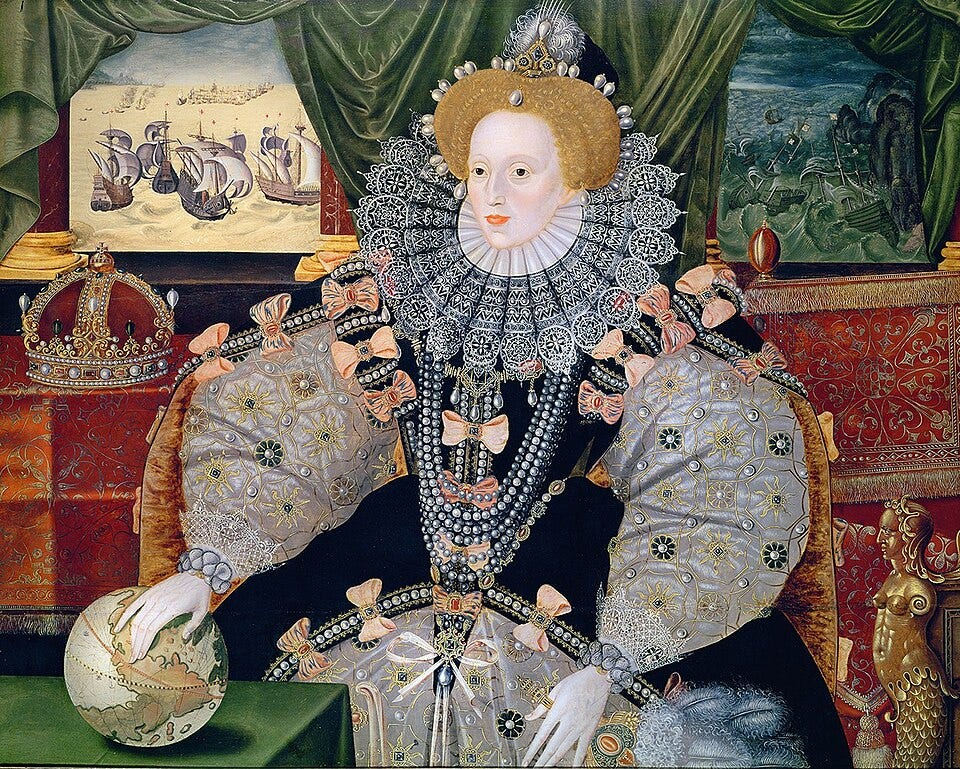


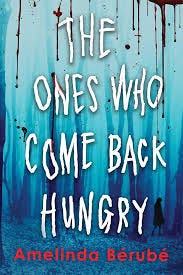

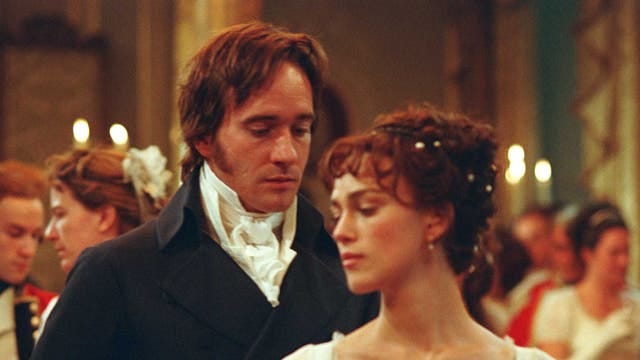
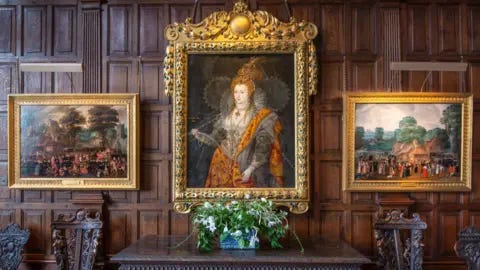
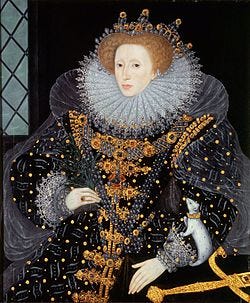
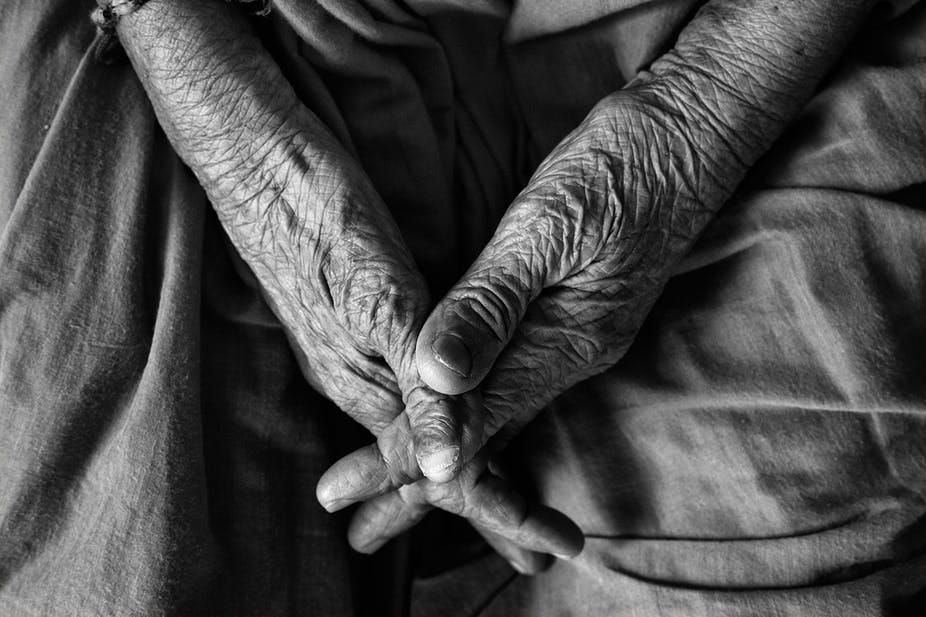
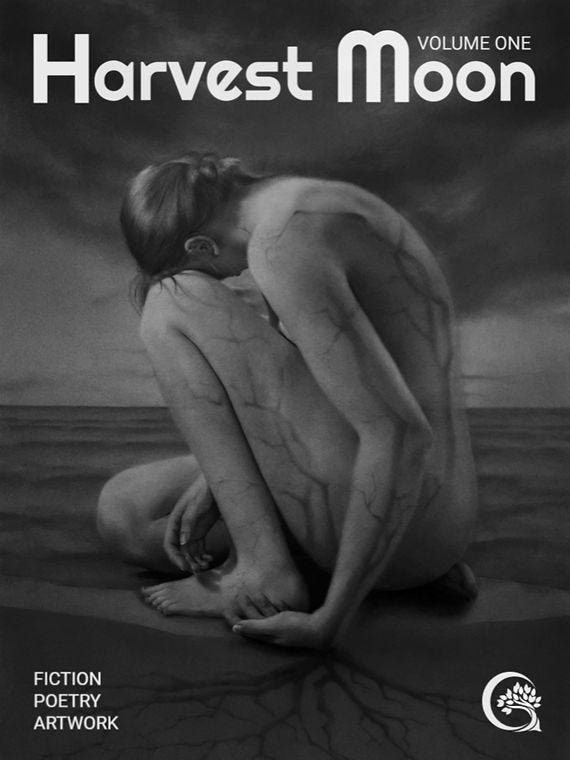
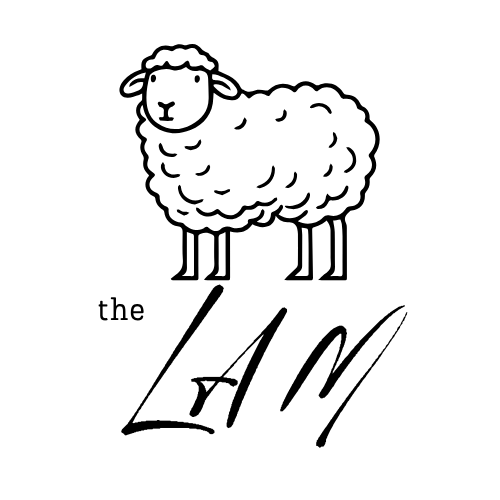
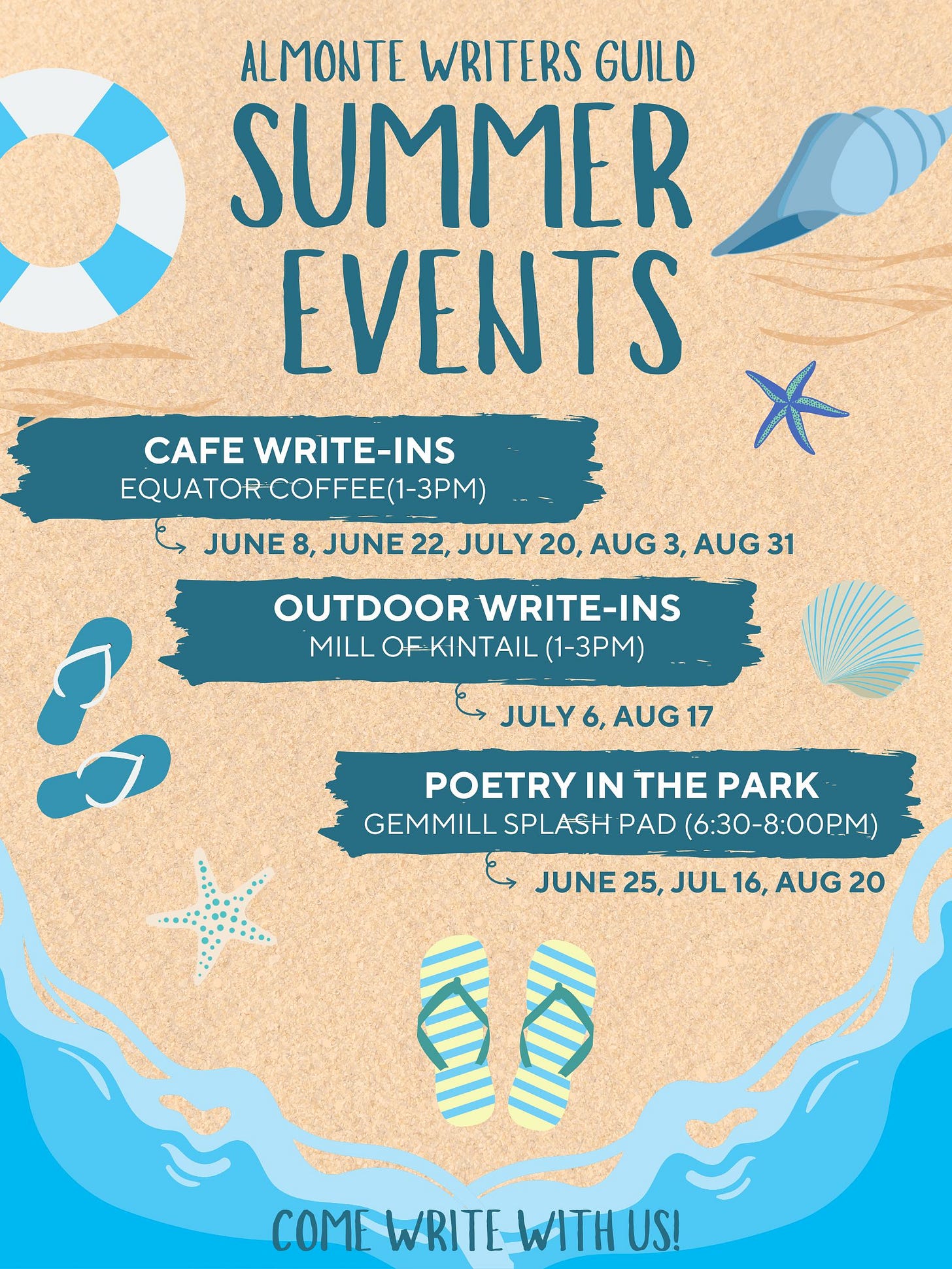


This was really, really good, Elysia. I always look forward to the 19th now, thanks to you. 💚💚
I’m so proud of you and excited for Whale Fall!
Oh, but you are a horror writer, Elysia. I've read at least two of your stories that were impeccable horror. Great read. Thanks for sharing. :-)